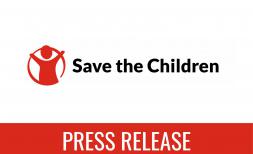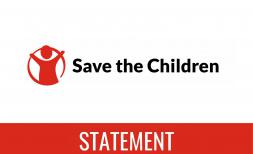Children’s ‘homes, schools and livelihoods washed away’ in India and Bangladesh floods: Save the Children

Children across India and Bangladesh have seen their homes, schools and livelihoods washed away by days of heavy pre-monsoon rains and flooding as extreme weather events in the region get more frequent and severe due to the climate crisis, according to Save the Children.
In one district of Bangladesh – Sylhet – 419 primary schools have been damaged by floodwater, Save the Children said. Hundreds more have been damaged and are closed, putting education out of reach for hundreds of thousands of children. Some 93,000 homes have been damaged, forcing families into makeshift camps in whatever buildings remain intact, the organisation said.
About 3,000 hectares of paddy fields – growing the country’s staple food, rice – have been completely destroyed[i]. At least 14 health centres are also underwater, with many more damaged.
In total, the floods have affected more than two million people in Bangladesh, 1.2 million of them children[ii], and have claimed 10 lives.
Suhena Khatun, 22, from Sylhet District, Bangladesh, said: “We had to move to a relative’s house because of the rising water levels. Our house was getting damaged and rainwater was seeping inside. The trees and vegetable garden also got damaged. My oldest daughter has caught a fever, and we are afraid for her. My husband is now without work as his entire grain field has been destroyed.”
In India, floods have destroyed more than 300 homes, and affected more than 700,000 people, including 141,050 children[iii] from about 2,095 villages across Assam. Families have been forced to take shelter in relief camps, with reports of at least eight people dead and five missing. Elementary schools and childcare centres have been destroyed across all 31 affected districts.
These kinds of floods bring the risk of diarrhea and other water-borne diseases, Save the Children said. Long-term stagnant water also brings high risk of dengue fever and other vector-borne diseases.
India and Bangladesh are among the world’s most vulnerable places to the impacts of the climate emergency. Last week, India’s capital Delhi faced its fifth heatwave since March, with temperatures reaching 49C. Save the Children raised the alarm about the impact on the country’s poorest children and families, who are more likely to be forced to work or learn in the scorching heat.
Sudarshan Suchi, Save the Children India CEO, said: “The extent of the damage from these floods is incredibly distressing, and the situation must be extremely frightening for those who are caught up in it. We are particularly worried about the effect on children, who are among the most vulnerable to the impacts of these kinds of extreme weather events and disasters.
“Our staff are working tirelessly to provide immediate support to communities affected, and we are ensuring children’s wellbeing is an important part of our humanitarian response. We have set up Child Friendly Spaces to keep children safe, provide psychological support to them, and give them a space to play and get informal education until schools re-open.”
Shahim Jahan, Acting Country Director of Save the Children in Bangladesh, said: “In just a few days, children’s homes, schools and livelihoods have been washed away. Children in Bangladesh have to live day in, day out with the risks that come with extreme weather events like heavy rains and flooding – events that are only happening more and more due to the climate crisis.
“For these children this is not some far-off phenomenon – this is happening now. Climate vulnerable countries such as Bangladesh need more funding from the international community for adaptation as well as the loss and damage already caused by the climate emergency. Children’s homes, schools and lives are at stake.”
In India, Save the Children is assessing the needs of children and families affected, and providing them with basic shelter, food, clean drinking water and other essential items across three of the most affected districts.
Save the Children teams in Bangladesh are assessing the needs of affected communities and distributing crucial items like water purifying tablets and hygiene kits to stave off illness, as well as cash assistance.
About Save the Children India
Save the Children works across 20 of India’s 28 states, on issues related to education, health, protection and humanitarian and disaster risk reduction needs of children, especially for those who are the most deprived and marginalized. Save the Children's association with India is more than 80 years old. Visit www.savethechildren.in for more information.
About Save the Children Bangladesh
Save the Children has been working in Bangladesh since 1970. Being the largest child rights organisation in Bangladesh, Save the Children in Bangladesh is promoting the rights of children and adolescents to education, to health and to a life without violence. Save the Children in Bangladesh’s approach is based on the participation of children and adolescents, their families and communities in their own development. For more information please visit https://bangladesh.savethechildren.net/.
[i] Government of Bangladesh
[ii] Figures from Needs Assessment Working Group of Bangladesh
[iii] Assam State Disaster Management Authority
For more infomration please contact:
- Emily Wight; Emily.Wight@savethechildren.org
- Charlotte Rose; Charlotte.Rose@savethechildren.org
- Our media out of hours (BST) contact is media@savethechildren.org.uk / +44 7831 650409




